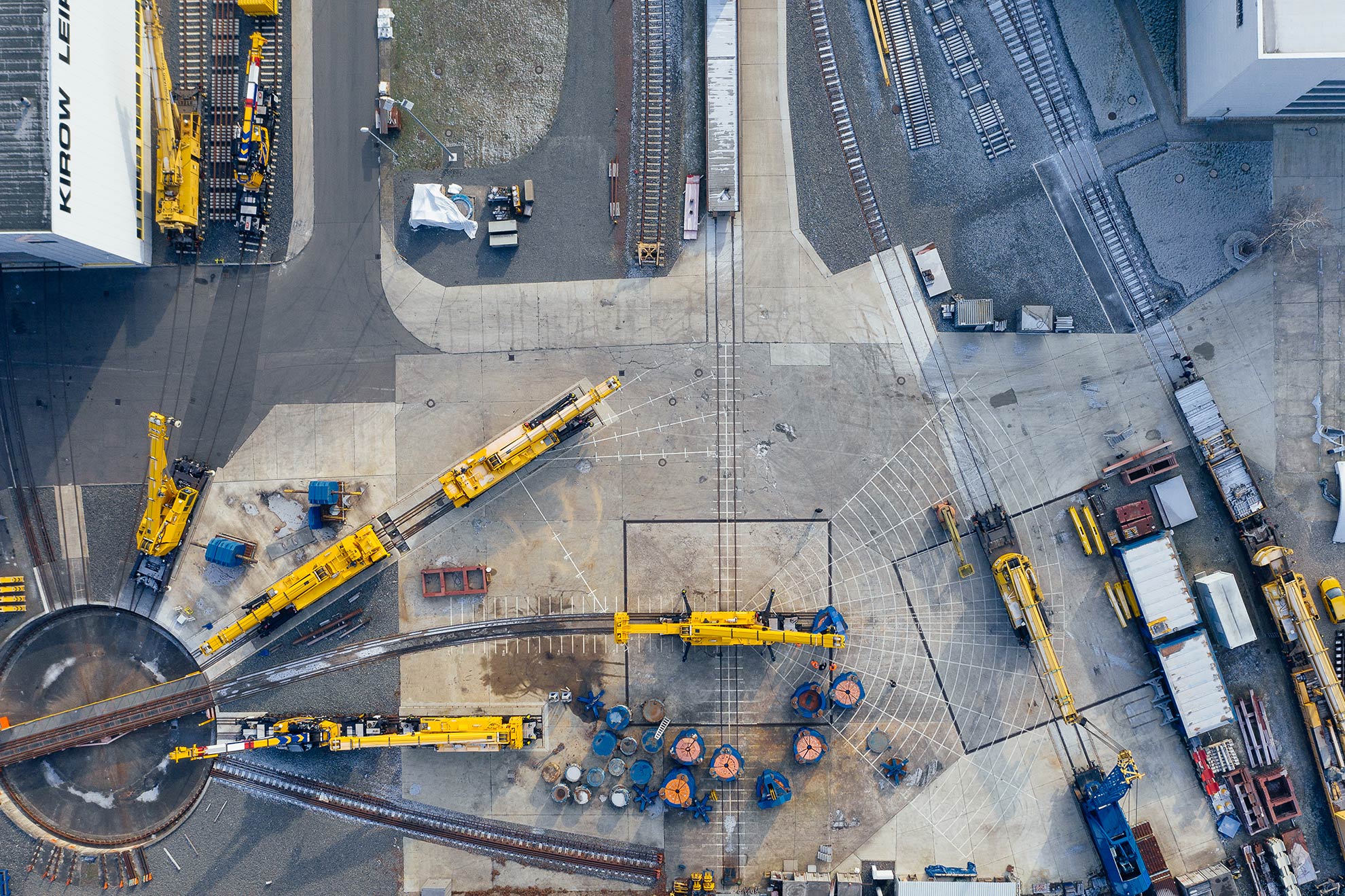NEW RAILWAY CRANES DELIVERED FOR THE SBB
27.09.2019
SBB modernised its fleet of bridge cranes between 2016 and 2019. The two Techne KRC 800s delivered in 1996 were replaced with a Multi Tasker 1200 with double slewing ring and a Multi Tasker 1100 with compact counterweight. The Multi Tasker 1200 has a 50 % higher load capacity than the previous generation of cranes. With a typical bridge overhang of 12–15 metres in front of the buffers, it can lift 60 / 49.5 tonnes compared to the 38 / 32 tonnes of the KRC 800. The boom can swivel separately from the counterweight so that traffic on the neighbouring track is not obstructed during construction work. The same is possible with the Multi Tasker 1100, which can rotate up to 16° without leaving the profile of the working track due to its special angled counterweight shape, and thus has a lateral working range of up to 7.5 metres with a radius of 27 metres. Thanks to the triple telescopic boom, both cranes can also lift heavy loads of over 100 t, making them ideal for use by accident rescue services. At 09:00 on 9th July 2019 it was time for both cranes to carry out their first major joint assignment. At Lake Zug, on the track section between Goldau and Walchwil, a new bridge with a weight of 65 t and a length of 35 m was installed as part of the project to extend the double track of the Goldau – Zug line. The construction process was as follows: The prefabricated bridge was delivered and elevated next to the railway embankment. Then support bases were positioned for the crane supports – thanks to the modern controls of the two new cranes, only two diagonally positioned supports were required in each case. After slewing to the side, lifting its load and slewing back onto the track axis, the leading crane and its load were moved over an existing bridge structure. The construction company benefited from the fact that the crane with telescoped counterweight has low wheel loads. At the installation site, the new bridge was pivoted over its destination site and lowered onto the bridge bearing with millimetre precision. The installation engineer and the crane operator communicated via hand signals. The working movements of the crane were extremely flexible and highly productive; by 10:05 the new bridge had been installed. As a result, SBB were extremely satisfied – the two new Techne Multi Taskers had completed their first joint deployment in exemplary fashion.

